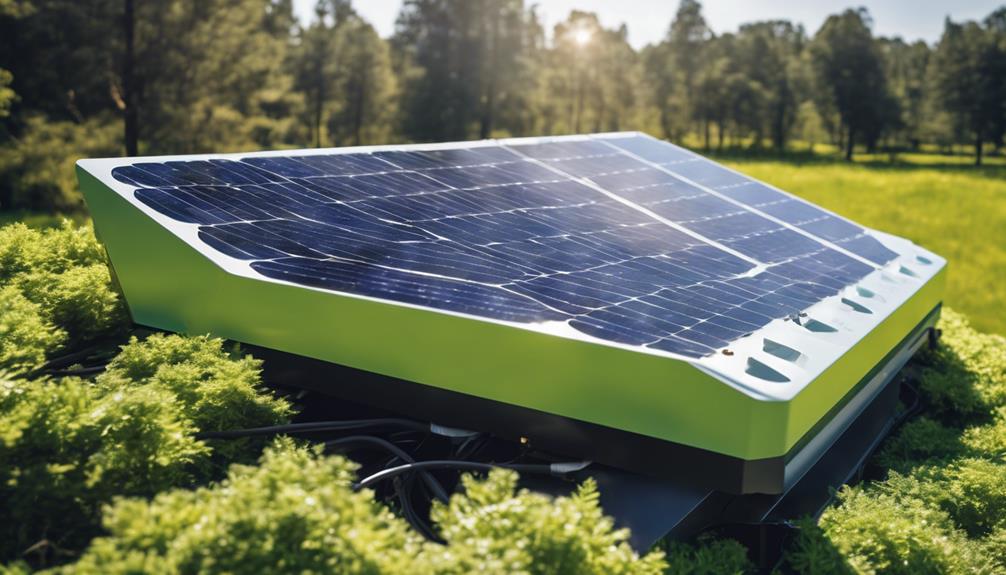
Solar energy has emerged as one of the most viable and sustainable energy sources in the modern world. Among the various technologies harnessing solar power, solar thermal collectors stand out for their efficiency and versatility. This blog post provides an in-depth look at solar thermal collectors, how they work, their benefits, types, applications, and why they are an essential component of renewable energy systems.
Understanding Solar Thermal Collectors
Solar thermal collectors are devices that convert sunlight into heat. Unlike photovoltaic cells that generate electricity, these collectors utilize sunlight to heat a fluid—usually water or air—which can then be used for various applications. This technology is particularly beneficial for residential and commercial heating needs, such as space heating, water heating, and even industrial processes. By capitalizing on the sun’s energy, solar thermal collectors help reduce reliance on fossil fuels and lower greenhouse gas emissions.
How Solar Thermal Collectors Work
The basic principle behind solar thermal collectors is relatively simple. They typically consist of a flat or evacuated tube that absorbs sunlight, with a heat transfer fluid circulating through them. The absorbed sunlight heats the fluid, which is then transferred to a storage tank or directly used for heating. There are two main types of solar thermal collectors: flat-plate collectors and evacuated tube collectors. Flat-plate collectors are often used for residential water heating, while evacuated tube collectors are more efficient and suitable for colder climates due to their superior insulation properties.
Types of Solar Thermal Collectors
Understanding the different types of solar thermal collectors is crucial for selecting the right system for your needs. Flat-plate collectors are the most common, featuring a simple design that consists of a thermal absorber, a transparent cover, and insulation. They are ideal for moderate climates and are widely used for residential hot water systems. On the other hand, evacuated tube collectors consist of multiple glass tubes that create a vacuum, significantly reducing heat loss. These collectors are more efficient in colder climates and can be used for both residential and commercial applications.
Benefits of Using Solar Thermal Collectors
The advantages of solar thermal collectors are numerous. Firstly, they provide a renewable source of energy, significantly reducing energy bills by decreasing reliance on conventional heating methods. Secondly, solar thermal systems require minimal maintenance, as they have few moving parts and are designed for durability. Additionally, solar thermal collectors can contribute to energy independence, allowing homeowners and businesses to generate their heating needs sustainably. Finally, many regions offer incentives and tax credits for installing solar thermal systems, making them a financially attractive option.
Applications of Solar Thermal Collectors
Solar thermal collectors have a wide range of applications across various sectors. In residential settings, they are primarily used for domestic hot water heating, pool heating, and space heating. In commercial applications, solar thermal collectors can supply hot water for restaurants, hotels, and laundries. Additionally, industrial processes such as food processing, chemical manufacturing, and textile production can leverage solar thermal energy for heating purposes. The versatility of these systems makes them suitable for both small-scale and large-scale applications.
Cost-Effectiveness of Solar Thermal Collectors
While the initial investment for solar thermal collectors can be significant, they often pay for themselves over time through energy savings. The cost of solar thermal systems has decreased in recent years due to advancements in technology and increased competition in the market. Homeowners can expect to recoup their investment within 5 to 10 years, depending on the size of the system and local energy prices. Additionally, many regions offer government incentives, grants, and financing options that can further reduce the upfront costs and enhance the cost-effectiveness of solar thermal collectors.
Challenges and Limitations of Solar Thermal Collectors
Despite their many advantages, solar thermal collectors do have limitations. One significant challenge is the dependency on sunlight, which means their efficiency can decline on cloudy days or during winter months. To mitigate this issue, combining solar thermal systems with other heating methods, such as gas or electric systems, can ensure a consistent hot water supply. Moreover, the installation of solar thermal collectors requires sufficient roof space and proper orientation to maximize sunlight exposure. These factors should be carefully considered before making a decision.
The Future of Solar Thermal Collectors in Renewable Energy
The future of solar thermal collectors looks promising as the world increasingly shifts towards renewable energy sources. With ongoing advancements in technology, the efficiency and affordability of solar thermal systems are expected to improve significantly. Innovations such as hybrid systems that combine solar thermal collectors with photovoltaic panels are gaining traction, providing even greater energy efficiency. As governments and businesses continue to invest in sustainable energy solutions, solar thermal collectors will likely play a pivotal role in reducing carbon footprints and meeting energy demands in a clean and efficient manner.
In conclusion, solar thermal collectors represent a powerful solution for harnessing solar energy for various heating applications. By understanding how they work, their benefits, types, and applications, you can make an informed decision about whether a solar thermal collector is the right choice for your energy needs. As we move towards a more sustainable future, embracing technologies like solar thermal collectors will be crucial in combating climate change and promoting energy independence.





